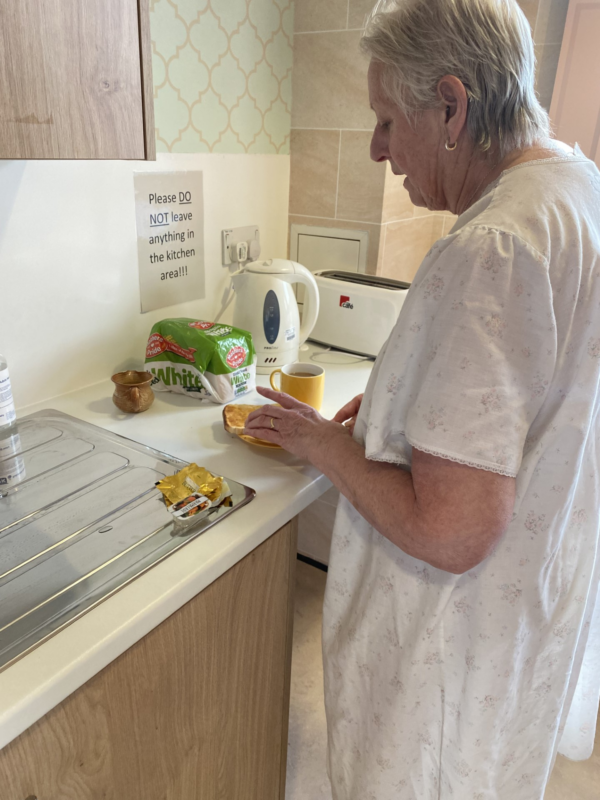Although OT (occupational therapist) Week has officially ended, we are continuing to shine a light on the invaluable work of our occupational therapists.
This is the story of one of our former patients, Pauline Wilkes, who was able to go home much sooner after her treatment at The James Cook University Hospital, thanks to our amazing cohort of occupational therapists.
Pauline was admitted to the hospital for six days from 18 October to 24 October due to a recurrent dislocated hip but was quickly able to get on with her daily life after benefiting from a series of expertly devised assessments and simulating real-life situations.
To enable this outcome, the team encouraged Pauline to undertake a trio of washing, dressing and kitchen assessments, in the new purpose-build kitchen on ward 25, to ensure she could manage these tasks without any help.
Through these assessments, the team were able to determine Pauline’s ability to dress and undress on her own, while accessing her cognitive skills such as initiating a task, problem solving and concentration. This also helped to identify whether Pauline required any equipment following her hospital discharge.
These coordinated assessments motivated Pauline to feel confident in completing the tasks and the team continued to increase the difficulty level of these tasks to ensure she was ready to be discharged.
During this period, the occupational therapists also shared expert advice with her to ensure she remained independent but with safety as the top priority.

Senior orthopaedics occupational therapist Vicky Field, who led the initiative, said: “Due to the longer waiting times for rehabilitation, we aim to complete such functional assessments on acute wards with improved time management – helping patients get home sooner where they can settle much better in their own environments.
This also reduces the waiting lists for patients requiring rehabilitation and in turn, reduces the pressures on beds in our hospital – improving patient flow and minimising the costs in treating patients on a longer-term basis.”
Such initiatives are just the tip of the iceberg of what our occupational therapists do behind the scenes for our patients.
The culmination of efforts and hard work carried out by them further helps in releasing vital hospital beds and enables the wider teams to provide care for those who need it the most.
